Use this nursing care plan and management guide to help care for patients with HIV/AIDS. Enhance your understanding of nursing assessment, interventions, goals, and nursing diagnosis, all specifically tailored to address the unique needs of individuals facing HIV/AIDS. This guide equips you with the necessary information to provide effective and specialized care to patients dealing with HIV/AIDS.
What is HIV and AIDS?
Acquired immunodeficiency syndrome (AIDS) is a serious secondary immunodeficiency disorder caused by the retrovirus, the human immunodeficiency virus (HIV). Both diseases are characterized by the progressive destruction of cell-mediated (T-cell) immunity with subsequent effects on humoral (B-cell) immunity because of the pivotal role of the CD4+helper T cells in immune reactions. Immunodeficiency makes the patient susceptible to opportunistic infections, unusual cancers, and other abnormalities.
AIDS results from the infection of HIV which has two forms: HIV-1 and HIV-2. Both forms have the same model of transmission and similar opportunistic infections associated with AIDS, but studies indicate that HIV-2 develops more slowly and presents with milder symptoms than HIV-1. Transmission occurs through contact with infected blood or body fluids and is associated with identifiable high-risk behaviors.
Persons with HIV/AIDS have been found to fall into five general categories: (1) homosexual or bisexual men, (2) injection drug users, (3) recipients of infected blood or blood products, (4) heterosexual partners of a person with HIV infection, and (5) children born to an infected mother. The rate of infection is most rapidly increasing among minority women and is increasingly a disease of persons of color.
There is no cure yet for either HIV or AIDS. However, significant advances have been made to help patients control signs and symptoms and delay disease progression.
Nursing Care Plans and Management
The nursing care planning goals for a patient with HIV/AIDS may include preventing the progression of the disease, managing symptoms, decreasing the risk of complications and infections, promoting compliance with medication and treatment regimens, and providing emotional and social support. The goals may also focus on educating the patient and the family members about HIV/AIDS, its transmission, and prevention, as well as addressing any stigma or discrimination that the patient may experience.
Nursing Problem Priorities
The following are the nursing priorities for patients with HIV/AIDS:
- Initiate antiretroviral therapy (ART).
- Monitor and manage opportunistic infections.
- Provide comprehensive HIV care and support.
- Promote prevention and safe behavior.
- Address coexisting health conditions.
- Offer psychosocial support.
- Promote preventive care and screenings.
- Support treatment adherence and retention in care.
- Provide education on risk reduction for HIV transmission.
- Promote a healthy lifestyle.
Nursing Assessment
Assess for the following subjective and objective data:
- Persistent or recurrent fever
- Profound and unexplained fatigue and weakness
- Rapid weight loss and loss of appetite
- Chronic diarrhea or gastrointestinal problems
- Night sweats and chills
- Swollen lymph nodes in the armpits, groin, or neck
- Persistent cough, shortness of breath, and respiratory symptoms
- Recurrent infections, such as pneumonia, tuberculosis, or fungal infections
- Skin rashes, sores, or lesions
- Neurological symptoms, including memory loss, confusion, or difficulty concentrating
- Recurrent or severe vaginal yeast infections
- Recurrent oral thrush (white coating on the tongue and mouth)
- Persistent and unexplained pain, such as headaches or abdominal pain
- Visual changes or eye problems
Nursing Diagnosis
Following a thorough assessment, a nursing diagnosis is formulated to specifically address the challenges associated with AIDS based on the nurse’s clinical judgement and understanding of the patient’s unique health condition. While nursing diagnoses serve as a framework for organizing care, their usefulness may vary in different clinical situations. In real-life clinical settings, it is important to note that the use of specific nursing diagnostic labels may not be as prominent or commonly utilized as other components of the care plan. It is ultimately the nurse’s clinical expertise and judgment that shape the care plan to meet the unique needs of each patient, prioritizing their health concerns and priorities.
Nursing Goals
Goals and expected outcomes may include:
- The patient will maintain weight or display weight gain toward the desired goal.
- The patient will demonstrate positive nitrogen balance, be free of signs of malnutrition, and display improved energy levels.
- The patient will report an improved sense of energy.
- The patient will perform ADLs, with assistance as necessary.
- The patient will participate in desired activities at the level of ability.
- The patient will report relief/control of pain.
- The patient will be free of/display improvement in wound/lesion healing.
- The patient will demonstrate behaviors/techniques to prevent skin breakdown/promote healing.
- The patient will display intact mucous membranes, which are pink, moist, and free of inflammation/ulcerations.
- The patient will demonstrate techniques to restore/maintain the integrity of oral mucosa.
- The patient will maintain the usual reality orientation and optimal cognitive functioning.
- The patient will verbalize awareness of feelings and healthy ways to deal with them.
- The patient will display an appropriate range of feelings and lessened fear/anxiety.
- The patient will use resources for assistance.
- The patient will participate in activities/programs at the level of ability/desire.
- The patient will acknowledge feelings and have healthy ways to deal with them.
- The patient will verbalize some sense of control over the present situation.
- The patient will make choices related to the care and be involved in self-care.
- The patient will display homeostasis as evidenced by the absence of bleeding.
- The patient will maintain hydration as evidenced by moist mucous membranes, good skin turgor, stable vital signs, and individually adequate urinary output.
- The patient will maintain hydration as evidenced by moist mucous membranes, good skin turgor, stable vital signs, and individually adequate urinary output.
- The patient will achieve timely healing of wounds/lesions.
- The patient will be afebrile and free of purulent drainage/secretions and other signs of infectious conditions.
Nursing Interventions and Actions
Therapeutic interventions and nursing actions for patients with AIDS may include:
1. Promoting Adequate Nutrition and Hydration
The nutritional and hydration status of a patient with AIDS can be compromised due to various factors. HIV infection can affect the body’s ability to absorb and utilize nutrients, leading to malnutrition and weight loss. Opportunistic infections, diarrhea, and gastrointestinal issues commonly seen in AIDS can further contribute to poor nutrition and fluid imbalance. It is crucial to assess and manage the nutritional needs of patients with AIDS through appropriate dietary interventions, oral supplements, and intravenous fluids when necessary.
Assess the patient’s ability to chew, taste, and swallow.
Lesions of the mouth, throat, and esophagus (often caused by candidiasis, herpes simplex, hairy leukoplakia, Kaposi’s sarcoma other cancers) and metallic or other taste changes caused by medications may cause dysphagia, limiting the patient’s ability to ingest food and reducing the desire to eat.
Auscultate bowel sounds.
Hypermotility of the intestinal tract is common and is associated with vomiting and diarrhea, which may affect the choice of diet/route. Lactose intolerance and malabsorption (with CMV, MAC, and cryptosporidiosis) contribute to diarrhea and may necessitate a change in diet or supplemental formula.
Weigh as indicated. Evaluate weight in terms of premorbid weight. Compare serial weights and anthropometric measurements.
Indicator of nutritional adequacy of intake. Because of depressed immunity, some blood tests normally used for testing nutritional status are not useful.
Note drug side effects.
Medications used can have side effects affecting nutrition. ZDV can cause altered taste, nausea, and vomiting; Bactrim can cause anorexia, glucose intolerance, and glossitis; Pentam can cause altered taste and smell; Protease inhibitors can cause elevated lipids, and blood sugar increase due to insulin resistance.
Record ongoing caloric intake.
Identifies the need for supplements or alternative feeding methods.
Plan diet with the patient and include SO, suggesting foods from home if appropriate. Provide small, frequent meals and snacks of nutritionally dense foods and non-acidic foods and beverages, with a choice of foods palatable to the patient. Encourage high-calorie and nutritious foods, some of which may be considered appetite stimulants. Note the time of day when appetite is best, and try to serve a larger meal at that time.
Including patients in planning gives a sense of control of the environment and may enhance intake. Fulfilling cravings for noninstitutional food may also improve intake. In this population, foods with a higher fat content may be recommended as tolerated to enhance taste and oral intake.
Limit food(s) that induce nausea and vomiting or are poorly tolerated by the patient because of mouth sores or dysphagia. Avoid serving very hot liquids and foods. Serve foods that are easy to swallow like eggs, ice cream, and cooked vegetables.
Pain in the mouth or fear of irritating oral lesions may cause the patient to be reluctant to eat. These measures may be helpful in increasing food intake.
Schedule medications between meals (if tolerated) and limit fluid intake with meals, unless fluid has nutritional value.
Gastric fullness diminishes appetite and food intake.
Encourage as much physical activity as possible.
May improve appetite and general feelings of well-being.
Provide frequent mouth care, observing secretion precautions. Avoid alcohol-containing mouthwashes.
Reduces discomfort associated with nausea and vomiting, oral lesions, mucosal dryness, and halitosis. A clean mouth may enhance appetite and provide comfort.
Provide a rest period before meals. Avoid stressful procedures close to mealtime.
Minimizes fatigue; increases the energy available for work of eating and reduces chances of nausea or vomiting food.
Remove existing noxious environmental stimuli or conditions that aggravate the gag reflex.
Reduces stimulus of the vomiting center in the medulla.
Encourage the patient to sit up for meals
Facilitates swallowing and reduces the risk of aspiration.
Maintain NPO status when appropriate.
May be needed to reduce nausea and vomiting.
Insert or maintain a nasogastric (NG) tube as indicated.
May be needed to reduce vomiting or to administer tube feedings. Esophageal irritation from existing infection (Candida, herpes, or KS) may provide site for secondary infections and trauma; therefore, NG tube should be used with caution.
Administer medications (vitamins, antiemetics, appetite stimulants, antidiarrheals, TNF-alpha inhibitors, and sucralfate suspension as indicated.
See Pharmacologic Management
Monitor vital signs, including CVP if available. Note hypotension, including postural changes.
Indicators of circulating fluid volume.
Note temperature elevation and duration of the febrile episode. Administer tepid sponge baths as indicated. Keep clothing and linens dry. Maintain comfortable environmental temperature.
Around 97%, fever is one of the most frequent symptoms experienced by patients with HIV infections. Increased metabolic demands and associated excessive diaphoresis result in increased insensible fluid losses and dehydration.
Assess skin turgor, mucous membranes, and thirst.
Indirect indicators of fluid status.
Measure urinary output and specific gravity. Measure and estimate the amount of diarrheal loss. Note insensible losses.
Increased specific gravity and decreasing urinary output reflect altered renal perfusion and circulating volume. Monitoring fluid balance is difficult in the presence of excessive GI and insensible losses.
Weigh as indicated.
Although weight loss may reflect muscle wasting, sudden fluctuations reflect the state of hydration. Fluid losses associated with diarrhea can quickly create a crisis and become life-threatening.
Monitor oral intake and encourage fluids of at least 2500 mL/day.
Maintains fluid balance, reduces thirst, and keeps mucous membranes moist.
Monitor laboratory studies as indicated: Serum or urine electrolytes; BUN/Cr; Stool specimen collection.
Alerts to possible electrolyte disturbances and determines replacement needs.Evaluates renal perfusion and function. Bowel flora changes can occur with multiple or single antibiotic therapy.
Make fluids easily accessible to the patient; use fluids that are tolerable to the patient and that replace needed electrolytes
Enhances intake. Certain fluids may be too painful to consume (acidic juices) because of mouth lesions.
Eliminate foods potentiating diarrhea
May help reduce diarrhea. The use of lactose-free products helps control diarrhea in lactose-intolerant patients.
Encourage the use of live culture yogurt or OTC Lactobacillus acidophilus (Lactaid).
Antibiotic therapies disrupt normal bowel flora balance, leading to diarrhea. Must be taken 2 hr before or after antibiotic to prevent inactivation of live culture.
Maintain a hypothermia blanket if used.
May be necessary when other measures fail to reduce excessive fever/insensible fluid losses.
Administer fluids and electrolytes via feeding tube and IV, as appropriate.
May be necessary to support or augment circulating volume, especially if oral intake is inadequate, and nausea and vomiting persist.
2. Managing Fatigue and Weakness
Fatigue is a common symptom experienced by patients with HIV/AIDS, and can be caused by a variety of factors, including the disease process itself, side effects of medications, anemia, depression, anxiety, and poor sleep quality. HIV/AIDS can also cause chronic inflammation and immune activation, which can contribute to feelings of fatigue and malaise.
Assess sleep patterns and note changes in thought processes and behavior.
Multiple factors can aggravate fatigue, including sleep deprivation, emotional distress, side effects of drugs and chemotherapies, and developing CNS disease.
Monitor physiological response to activity: changes in BP, respiratory rate, or heart rate.
Tolerance varies greatly, depending on the stage of the disease process, nutrition state, fluid balance, and the number or type of opportunistic diseases that the patient has been subject to.
Recommend scheduling activities for periods when the patient has the most energy. Plan care to allow for rest periods. Involve patient and SO in schedule planning.
Planning allows patients to be active during times when their energy level is higher, which may restore a feeling of well-being and a sense of control. Frequent rest periods are needed to restore or conserve energy.
Establish realistic activity goals with the patient.
Provides a sense of control and feelings of accomplishment. Prevents discouragement from the fatigue of overactivity.
Encourage the patient to do whatever is possible: self-care, sitting in a chair, and short walks. Increase activity level as indicated.
May conserve strength, increase stamina, and enable the patient to become more active without undue fatigue and discouragement.
Identify energy conservation techniques: sitting, breaking ADLs into manageable segments. Keep travel ways clear of furniture. Provide or assist with ambulation and self-care needs as appropriate.
Weakness may make ADLs almost impossible for patients to complete. Protects patient from injury during activities.
Encourage nutritional intake.
Adequate intake or utilization of nutrients is necessary to meet increased energy needs for activity. Continuous stimulation of the immune system by HIV infection contributes to a hypermetabolic state.
Provide supplemental O2 as indicated.
The presence of anemia or hypoxemia reduces oxygen available for cellular uptake and contributes to fatigue.
Refer to physical and/or occupational therapy.
Programmed daily exercises and activities help patients maintain and increase strength and muscle tone, and enhance a sense of well-being.
Refer to community resources
Provides assistance in areas of individual need as the ability to care for self becomes more difficult.
3. Promoting Skin Integrity
Patients with AIDS may experience compromised skin integrity due to several factors. The immunodeficiency associated with AIDS can increase the risk of skin infections, slow wound healing, and make individuals more susceptible to dermatological conditions such as fungal infections and skin rashes. Proper skincare, infection prevention measures, and timely management of skin-related issues are essential in maintaining skin integrity and preventing complications in patients with AIDS.
Assess skin daily. Note color, turgor, circulation, and sensation. Describe and measure lesions and observe changes. Take photographs if necessary.
Establishes comparative baseline providing an opportunity for timely intervention.
Obtain cultures of open skin lesions.
Identifies pathogens and appropriate treatment choices.
Maintain and instruct in good skin hygiene: wash thoroughly, pat dry carefully, and gently massage with lotion or appropriate cream.
Maintaining clean, dry skin provides a barrier to infection. Patting skin dry instead of rubbing reduces the risk of dermal trauma to dry and fragile skin. Massaging increases circulation to the skin and promotes comfort. Isolation precautions are required when extensive or open cutaneous lesions are present.
Reposition frequently. Use the turn sheet as needed. Encourage periodic weight shifts. Protect bony prominences with pillows, heel and elbow pads, and sheepskin.
Reduces stress on pressure points, improves blood flow to tissues, and promotes healing.
Maintain clean, dry, wrinkle-free linen, preferably soft cotton fabric.
Skin friction caused by wet or wrinkled or rough sheets leads to irritation of fragile skin and increases the risk of infection.
Encourage ambulation as tolerated.
Decreases pressure on the skin from prolonged bed rest.
Cleanse the perianal area by removing stool with water and mineral oil or commercial product. Avoid the use of toilet paper if vesicles are present. Apply protective creams: zinc oxide, and A & D ointment.
Prevents maceration caused by diarrhea and keeps perianal lesions dry. The use of toilet paper may abrade lesions.
File nails regularly.
Long and rough nails increase the risk of dermal damage.
Cover open pressure ulcers with sterile dressings or protective barrier: Tegaderm, DuoDerm, as indicated.
May reduce bacterial contamination, and promote healing.
Provide foam, flotation, and alternate pressure mattress or bed.
Reduces pressure on skin, tissue, and lesions, decreasing tissue ischemia.
Apply and administer medications as indicated.
Used in the treatment of skin lesions. The use of agents such as Prederm spray can stimulate circulation, enhancing the healing process. When multidose ointments are used, care must be taken to avoid cross-contamination.
Cover ulcerated KS lesions with wet-to-wet dressings or antibiotic ointment and nonstick dressing, as indicated.
Protects ulcerated areas from contamination and promotes healing
Refer to physical therapy for regular exercise and activity programs.
Promotes improved muscle tone and skin health.
4. Managing Acute and Chronic Pain
HIV/AIDS can cause chronic pain due to various reasons, including the direct effects of the virus on the nervous system, HIV-related infections and inflammation, and the side effects of antiretroviral medications. HIV/AIDS can also lead to acute pain episodes, such as painful neuropathy and other types of infections that cause pain.
Assess pain reports, noting location, intensity (0–10 scale), frequency, and time of onset. Note nonverbal cues like restlessness, tachycardia, and grimacing.
Indicates the need for or effectiveness of interventions and may signal the development or resolution of complications. Chronic pain does not produce autonomic changes; however, acute and chronic pain can coexist.
Instruct and encourage the patient to report pain as it develops rather than waiting until the level is severe.
The efficacy of comfort measures and medications is improved with timely intervention.
Encourage verbalization of feelings.
Can reduce anxiety and fear and thereby reduce the perception of the intensity of pain.
Provide diversional activities: provide reading materials, light exercising, visiting, etc.
Refocuses attention; may enhance coping abilities.
Perform palliative measures: repositioning, massage, and ROM of affected joints.
Promotes relaxation and decreases muscle tension.
Instruct and encourage the use of visualization, guided imagery, progressive relaxation, deep-breathing techniques, meditation, and mindfulness.
Promotes relaxation and a feeling of well-being. May decrease the need for narcotic analgesics (CNS depressants) when a neuro/motor degenerative process is already involved. May not be successful in presence of dementia, even when dementia is minor. Mindfulness is the skill of staying in the here and now.
Provide oral care.
Oral ulcerations and lesions may cause severe discomfort.
Apply warm or moist packs to pentamidine injection and IV sites for 20 min after administration.
These injections are known to cause pain and sterile abscesses
Administer analgesics and/or antipyretics, narcotic analgesics. Use patient-controlled analgesia (PCA) or provide around-the-clock analgesia with rescue doses PRN.
Provides relief of pain and discomfort; reduces fever. PCA or around-the-clock medication keeps the blood level of analgesia stable, preventing cyclic under medication or overmedication. Drugs such as Ativan may be used to potentiate the effects of analgesics.
5. Maintaining Oral Mucous Membrane Integrity
Patients with AIDS may experience compromised oral mucous membranes as a result of immune suppression and increased susceptibility to infections. Conditions such as oral thrush (Candida infection), oral ulcers, and viral lesions like herpes simplex virus (HSV) can manifest, requiring proper oral hygiene, antifungal or antiviral treatment, and regular dental care to preserve oral health and prevent complications.
Assess mucous membranes and document all oral lesions. Note reports of pain, swelling, and difficulty with chewing and swallowing.
Edema, open lesions, and crusting on oral mucous membranes and throat may cause pain and difficulty with chewing and swallowing.
Obtain culture specimens of lesions.
Reveals causative agents and identifies appropriate therapies.
Provide oral care daily and after food intake, using a soft toothbrush, non-abrasive toothpaste, non-alcohol mouthwash, floss, and lip moisturizer.
Alleviates discomfort, prevents acid formation associated with retained food particles, and promotes a feeling of well-being.
Rinse oral mucosal lesions with saline and dilute hydrogen peroxide or baking soda solutions.
Reduces the spread of lesions and encrustations from candidiasis and promotes comfort.
Suggest the use of sugarless gum and candy.
Stimulates the flow of saliva to neutralize acids and protect mucous membranes.
Plan a diet to avoid salty, spicy, abrasive, and acidic foods or beverages. Check for temperature tolerance of foods. Offer cool or cold smooth foods.
Abrasive foods may open healing lesions. Open lesions are painful and aggravated by salt, spice, acidic foods, or beverages. Extreme cold or heat can cause pain to sensitive mucous membranes.
Encourage oral intake of at least 2500 mL/day.
Maintains hydration and prevents drying of the oral cavity.
Encourage the patient to refrain from smoking.
Smoke is drying and irritates mucous membranes.
Administer medications such as (nystatin (Mycostatin), ketoconazole (Nizoral), and TNF-alpha inhibitor, e.g., thalidomide as indicated:
Refer for dental consultation, if appropriate.
May require additional therapy to prevent dental losses.
6. Improving Mental Status and Thought Process
Patients with AIDS may experience changes in mental status and thought processes due to the impact of the disease on the central nervous system, as well as the emotional and psychological challenges associated with the diagnosis. This can include cognitive impairment, memory difficulties, depression, anxiety, and changes in overall mental well-being, requiring comprehensive mental health support and interventions.
Assess mental and neurological status using appropriate tools.
Establishes functional level at the time of admission and provides a baseline for future comparison.
Consider the effects of emotional distress. Assess for anxiety, grief, and anger.
This may contribute to reduced alertness, confusion, withdrawal, and hypoactivity, requiring further evaluation and intervention.
Monitor medication regimen and usage.
Actions and interactions of various medications, prolonged drug half-life, and/or altered excretion rates result in cumulative effects, potentiating the risk of toxic reactions. Some drugs may have adverse side effects: haloperidol (Haldol) can seriously impair motor function in patients with AIDS dementia complex.
Investigate changes in personality, response to stimuli, orientation, and level of consciousness; or development of headache, nuchal rigidity, vomiting, fever, and seizure activity.
Changes may occur for numerous reasons, including the development or exacerbation of opportunistic diseases or CNS infections. Early detection and treatment of CNS infection may limit permanent impairment of cognitive ability.
Maintain a pleasant environment with appropriate auditory, visual, and cognitive stimuli.
Providing normal environmental stimuli can help in maintaining some sense of reality orientation.
Provide cues for reorientation. Put radio, television, calendars, clocks, room with an outside view if necessary. Use the patient’s name. Identify yourself. Maintain consistent personnel and structured schedules as appropriate.
Frequent reorientation to place and time may be necessary, especially during fever and/or acute CNS involvement. A sense of continuity may reduce the associated anxiety.
Discuss the use of datebooks, lists, and other devices to keep track of activities.
These techniques help patients manage problems of forgetfulness.
Encourage family and SO to socialize and provide reorientation with current news, and family events.
Familiar contacts are often helpful in maintaining reality orientation, especially if the patient is hallucinating.
Encourage the patient to do as much as possible: dress and groom daily, see friends, and so forth.
Can help maintain mental abilities for a longer period.
Provide support for the significant other (SO). Encourage discussion of concerns and fears.
Bizarre behavior and/or deterioration of abilities may be very frightening for SO and makes management of care or dealing with situation difficult. The significant other may feel a loss of control as stress, anxiety, burnout, and anticipatory grieving impair coping abilities.
Provide information about care on an ongoing basis. Answer questions simply and honestly. Repeat explanations as needed.
Can reduce anxiety and fear of the unknown. Can enhance patient’s understanding and involvement and cooperation in treatment when possible.
Reduce provocative and noxious stimuli. Maintain bed rest in a quiet, darkened room if indicated.
If the patient is prone to agitation, violent behavior, or seizures, reducing external stimuli may be helpful.
Decrease noise, especially at night.
Promotes sleep, reducing cognitive symptoms and effects of sleep deprivation.
Maintain a safe environment: excess furniture out of the way, call bell within patient’s reach, bed in low position and rails up; restriction of smoking (unless monitored by caregiver/SO), seizure precautions, soft restraints if indicated.
Provides a sense of security and stability in an otherwise confusing situation.
Discuss causes or future expectations and treatment if dementia is diagnosed. Use concrete terms.
Obtaining information that ZDV has been shown to improve cognition can provide hope and control for losses.
Administer antiretroviral, anti-anxiety, and antipsychotic medications as indicated.
See Pharmacologic Management
Refer to counseling as indicated.
May help the patient gain control in presence of thought disturbances or psychotic symptomatology.
7. Managing Anxiety and Providing Emotional Support
Patients with AIDS may experience heightened anxiety and social isolation due to the stigma associated with the disease, fear of discrimination, and the emotional burden of managing a chronic illness. Supportive interventions focusing on education, counseling, and community engagement are essential to address anxiety and combat social isolation, promoting a sense of belonging, understanding, and empowerment for individuals living with AIDS.
Be alert to signs of withdrawal, anger, or inappropriate remarks as these can be signs of denial or depression. Determine the presence of suicidal ideation and assess potential on a scale of 1–10.
The patient may use the defense mechanism of denial and continue to hope that the diagnosis is inaccurate. Feelings of guilt and spiritual distress may cause the patient to become withdrawn and believe that suicide is a viable alternative. Although the patient may be too “sick” to have enough energy to implement thoughts, ideation must be taken seriously and appropriate intervention initiated.
Assure the patient of confidentiality within the limits of the situation.
Provides reassurance and opportunity for patients to problem-solve solutions to anticipated situations.
Maintain frequent contact with patients. Talk with and touch the patient. Limit the use of isolation clothing and masks.
Provides assurance that patient is not alone or rejected; conveys respect for and acceptance of the person, fostering trust.
Provide accurate, consistent information regarding prognosis. Avoid arguing about the patient’s perceptions of the situation.
Can reduce anxiety and enable patients to make decisions and choices based on realities.
Provide an open environment in which the patient feels safe to discuss feelings or refrain from talking.
Helps patients feel accepted in their present condition without feeling judged, and promotes a sense of dignity and control.
Allow expressions of anger, fear, and despair without confrontation. Give information that feelings are normal and are to be appropriately expressed.
Acceptance of feelings allows the patient to begin to deal with the situation.
Recognize and support the stage patient and/or family is at in the grieving process.
Choice of interventions as dictated by the stage of grief, coping behaviors
Explain procedures, providing opportunities for questions and honest answers. Arrange for someone to stay with the patient during anxiety-producing procedures and consultations.
Accurate information allows patients to deal more effectively with the reality of the situation, thereby reducing anxiety and fear of the known.
Identify and encourage patient interaction with support systems. Encourage verbalization and interaction with family/SO.
Reduces feelings of isolation. If family support systems are not available, outside sources may be needed immediately
Provide reliable and consistent information and support for SO.
Allows for better interpersonal interaction and reduction of anxiety and fear.
Include SO as indicated when major decisions are to be made.
Ensures a support system for the patient, and allows SO the chance to participate in the patient’s life. If the patient, family, and SO are in conflict, separate care consultations and visiting times may be needed.
Discuss Advance Directives, end-of-life desires, or needs. Review specific wishes and explain various options clearly.
May assist the patient or SO to plan realistically for terminal stages and death. Many individuals do not understand medical terminology or options,
Refer to psychiatric counseling (psychiatric clinical nurse specialist, psychiatrist, social worker).
May require further assistance in dealing with diagnosis or prognosis, especially when suicidal thoughts are present.
Provide contact with other resources as indicated: Spiritual advisor or hospice staff
Provides an opportunity for addressing spiritual concerns. May help relieve anxiety regarding end-of-life care and support for the patient/SO.
Ascertain the patient’s perception of the situation.
Isolation may be partly self-imposed because the patient fears rejection/reaction of others.
Be alert to verbal or nonverbal cues: withdrawal, statements of despair, sense of aloneness. Ask the patient if thoughts of suicide are being entertained.
Indicators of despair and suicidal ideation are often present; when these cues are acknowledged by the caregiver, the patient is usually willing to talk about thoughts of suicide and a sense of isolation and hopelessness.
Spend time talking with patients during and between care activities. Be supportive, allowing for verbalization. Treat with dignity and regard for the patient’s feelings.
The patient may experience physical isolation as a result of the current medical status and some degree of social isolation secondary to the diagnosis of AIDS.
Limit or avoid the use of masks, gowns, and gloves when possible and when talking to patients.
Reduces the patient’s sense of physical isolation and provides positive social contact, which may enhance self-esteem and decrease negative behaviors.
Identify support systems available to the patient, including the presence of and/or relationship with immediate and extended family.
When the patient has assistance from SO, feelings of loneliness and rejection are diminished. The patient may not receive the usual or needed support for coping with a life-threatening illness and associated grief because of fear and lack of understanding (AIDS hysteria).
Explain isolation precautions and procedures to the patient and SO.
Gloves, gowns, and masks are not routinely required with a diagnosis of AIDS except when contact with secretions or excretions is expected. Misuse of these barriers enhances feelings of emotional and physical isolation. When precautions are necessary, explanations help patients understand the reasons for procedures and provide a feeling of inclusion in what is happening.
Encourage open visitation (as able), telephone contacts, and social activities within a tolerated level.
Participation with others can foster a feeling of belonging.
Encourage active role of contact with SO.
Helps reestablish a feeling of participation in a social relationship. May lessen the likelihood of suicide attempts.
Develop a plan of action with the patient: Look at available resources; support healthy behaviors. Help patients problem-solve solutions to short-term or imposed isolation.
Having a plan promotes a sense of control over own life and gives the patient something to look forward to and actions to accomplish.
Identify factors that contribute to the patient’s feelings of powerlessness: diagnosis of a terminal illness, lack of support systems, and lack of knowledge about the present situation.
Patients with AIDS are usually aware of the current literature and prognosis unless newly diagnosed. Powerlessness is most prevalent in a patient newly diagnosed with HIV and when dying of AIDS. Fear of AIDS (by the general population and the patient’s family/SO) is the most profound cause of the patient’s isolation. For some homosexual patients, this may be the first time that the family has been made aware that the patient lives an alternative lifestyle.
Assess the degree of feelings of helplessness: verbal or nonverbal expressions indicating lack of control, flat affect, and lack of communication.
Determines the status of the individual patient and allows for appropriate intervention when the patient is immobilized by depressed feelings.
Encourage active role in planning activities, establishing realistic and attainable daily goals. Encourage patient control and responsibility as much as possible. Identify things that the patient can and cannot control.
May enhance feelings of control and self-worth and a sense of personal responsibility.
Encourage Living Will and durable medical power of attorney documents, with specific and precise instructions regarding acceptable and unacceptable procedures to prolong life.
Many factors associated with the treatments used in this debilitating and often fatal disease process place patients at the mercy of medical personnel and other unknown people who may be making decisions for and about patients without regard for patients’ wishes, increasing loss of independence.
Discuss desires and assist with planning for the funeral as appropriate.
The individual can gain a sense of completion and value to his or her life when he or she decides to be involved in planning this final ceremony. This provides an opportunity to include things that are of importance to the person.
8. Promoting Safety and Preventing Injury
Safety and injury prevention are paramount for patients with AIDS to reduce the risk of infections and complications. This involves implementing measures such as practicing safe sex, avoiding sharing needles or other injection equipment, ensuring proper hygiene practices, and taking precautions to prevent accidental injuries, all aimed at minimizing the transmission of HIV and maintaining well-being.
Observe for or report epistaxis, hemoptysis, hematuria, non-menstrual vaginal bleeding, or oozing from lesions or body orifices and/or IV insertion sites.
Spontaneous bleeding may indicate the development of DIC or immune thrombocytopenia, necessitating further evaluation and prompt intervention.
Monitor for changes in vital signs and skin color: BP, pulse, respirations, skin pallor, and discoloration.
The presence of bleeding and hemorrhage may lead to circulatory failure and shock.
Evaluate change in the level of consciousness.
May reflect cerebral bleeding.
Hematest body fluids: urine, stool, vomitus, for occult blood.
Prompt detection of bleeding or initiation of therapy may prevent critical hemorrhage.
Review laboratory studies: PT, aPTT, clotting time, platelets, Hb/Hct.
Detects alterations in clotting capability; identifies therapy needs. Many individuals (up to 80%) display platelet count below 50,000 and may be asymptomatic, necessitating regular monitoring.
Avoid injections, rectal temperatures, and rectal tubes. Administer rectal suppositories with caution.
Protects patient from procedure-related causes of bleeding: insertion of thermometers and rectal tubes can damage or tear rectal mucosa. Some medications need to be given via suppository, so caution is advised.
Maintain a safe environment. Keep all necessary objects and call bell within the patient’s reach and place the bed in a low position.
Reduces accidental injury, which could result in bleeding.
Maintain bed rest or chair rest when platelets are below 10,000 or as individually appropriate. Assess medication regimen.
Reduces the possibility of injury, although activity needs to be maintained. May need to discontinue or reduce the dosage of a drug. The patient can have a surprisingly low platelet count without bleeding.
Avoid the use of aspirin products and NSAIDs, especially in presence of gastric lesions.
These medications reduce platelet aggregation, impairing and prolonging the coagulation process, and may cause further gastric irritation, and increased risk of bleeding.
Administer blood products as indicated.
Transfusions may be required in the event of persistent or massive spontaneous bleeding.
9. Preventing Infection
Patients with HIV/AIDS are at an increased risk of infection due to their compromised immune system, which is unable to effectively fight off opportunistic infections. Certain treatments for HIV/AIDS, such as chemotherapy or immunosuppressive medications, can also further increase the risk of infection. To mitigate this risk, patients with HIV/AIDS require close monitoring, appropriate prophylactic treatments, and management of co-occurring infections or conditions.
Assess patient knowledge and ability to maintain opportunistic infection prophylactic regimen.
Multiple medication regimens are difficult to maintain over a long period of time. Patients may adjust the medication regimen based on side effects experienced, contributing to inadequate prophylaxis, active disease, and resistance.
Assess respiratory rate and depth; note dry spasmodic cough on deep inspiration, changes in characteristics of sputum, and presence of wheezes or rhonchi. Initiate respiratory isolation when the etiology of productive cough is unknown.
Respiratory congestion or distress may indicate developing PCP; however, TB is on the rise and other fungal, viral, and bacterial infections may occur that compromise the respiratory system. CMV and PCP can reside together in the lungs and, if treatment is not effective for PCP, the addition of CMV therapy may be effective.
Investigate reports of headache, stiff neck, and altered vision. Note changes in mentation and behavior. Monitor for nuchal rigidity and seizure activity.
Neurological abnormalities are common and may be related to HIV or secondary infections. Symptoms may vary from subtle changes in mood and sensorium (personality changes or depression) to hallucinations, memory loss, severe dementias, seizures, and loss of vision. CNS infections (encephalitis is the most common) may be caused by protozoal and helminthic organisms or fungi.
Examine skin and oral mucous membranes for white patches or lesions.
Oral candidiasis, KS, herpes, CMV, and cryptococcosis are common opportunistic diseases affecting the cutaneous membranes.
Monitor vital signs, including temperature.
Provides information for baseline data; frequent temperature elevations and the onset of new fever indicate that the body is responding to a new infectious process or that medications are not effectively controlling incurable infections.
Monitor reports of heartburn, dysphagia, retrosternal pain on swallowing, increased abdominal cramping, and profuse diarrhea.
Esophagitis may occur secondary to oral candidiasis, CMV, or herpes. Cryptosporidiosis is a parasitic infection responsible for watery diarrhea (often more than 15L/day).
Inspect wounds and the site of invasive devices, noting signs of local inflammation and infection.
Early identification and treatment of secondary infection may prevent sepsis.
Wash hands before and after all care contacts. Instruct patient and SO to wash hands as indicated.
Reduces risk of cross-contamination.
Provide a clean, well-ventilated environment. Screen visitors and staff for signs of infection and maintain isolation precautions as indicated.
Reduces the number of pathogens presented to the immune system and reduces the possibility of a patient contracting a nosocomial infection.
Discuss the extent and rationale for isolation precautions and maintenance of personal hygiene.
Promotes cooperation with the regimen and may lessen feelings of isolation.
Clean the patient’s nails frequently. File, rather than cut, and avoid trimming cuticles.
Reduces the risk of transmission of pathogens through breaks in the skin. Fungal infections along the nail plate are common.
Wear gloves and gowns during direct contact with secretions and excretions or any time there is a break in the skin of the caregiver’s hands. Wear a mask and protective eyewear to protect the nose, mouth, and eyes from secretions during procedures (suctioning) or when a splattering of blood may occur.
The use of masks, gowns, and gloves is required for direct contact with body fluids, e.g., sputum, blood/blood products, semen, and vaginal secretions.
Dispose of needles and sharps in rigid, puncture-resistant containers.
Prevents accidental inoculation of caregivers. The use of needle cutters and recapping is not to be practiced. Accidental needlesticks should be reported immediately, with follow-up evaluations done per protocol.
Label blood bags, body fluid containers, soiled dressings, and linens, and package them appropriately for disposal per isolation protocol.
Prevents cross-contamination and alerts appropriate personnel and departments to exercise specific hazardous materials procedures.
Clean up spills of body fluids and/or blood with a bleach solution (1:10); add bleach to laundry.
Kills HIV and controls other microorganisms on surfaces.
10. Initiating Patient Education and Health Teachings
Patients with HIV/AIDS may have a lack of knowledge about their disease, its transmission, treatment options, and available resources. This can lead to poor medication adherence, increased risk of opportunistic infections, and other negative health outcomes.
Review disease process and future expectations.
Provides a knowledge base from which patients can make informed choices.
Determine the level of independence or dependence and physical condition. Note the extent of care and support available from family and SO and the need for other caregivers.
Helps plan the amount of care and symptom management required and the need for additional resources.
Review modes of transmission of disease, especially if newly diagnosed.
Corrects myths and misconceptions; promotes safety for patients and others. Accurate epidemiological data are important in targeting prevention interventions.
Identify signs and symptoms requiring medical evaluation: persistent fever and night sweats, swollen glands, continued weight loss, diarrhea, skin blotches and lesions, headache, chest pain, and dyspnea.
Early recognition of developing complications and timely interventions may prevent progression to life-threatening situations.
Instruct patient and caregivers concerning infection control, using good handwashing techniques for everyone (patient, family, caregivers); using gloves when handling bedpans, dressings, or soiled linens; wearing a mask if the patient has a productive cough; placing soiled or wet linens in a plastic bag and separating from family laundry, washing with detergent and hot water; cleaning surfaces with bleach and water solution of 1:10 ratio, disinfecting toilet bowl and bedpan with full-strength bleach; preparing patient’s food in clean area; washing dishes and utensils in hot soapy water (can be washed with the family dishes).
Reduces risk of transmission of diseases; promotes wellness in presence of reduced ability of the immune system to control the level of flora.
Stress the necessity of daily skin care, including inspecting skin folds, pressure points, and perineum, and providing adequate cleansing and protective measures: ointments, and padding.
Healthy skin provides a barrier to infection. Measures to prevent skin disruption and associated complications are critical.
Ascertain that the patient or SO can perform necessary oral and dental care. Review procedures as indicated. Encourage regular dental care.
The oral mucosa can quickly exhibit severe, progressive complications. Studies indicate that 65% of AIDS patients have some oral symptoms. Therefore, prevention and early intervention are critical.
Review dietary needs (high-protein and high-calorie) and ways to improve intake when anorexia, diarrhea, weakness, and depression interfere with intake.
Promotes adequate nutrition necessary for healing and support of the immune system; enhances the feeling of well-being.
Discuss medication regimen, interactions, and side effects
Enhances cooperation with or increases the probability of success with the therapeutic regimen.
Provide information about symptom management that complements the medical regimen; with intermittent diarrhea, take diphenoxylate (Lomotil) before going to a social event.
Provides patients with an increased sense of control, reduces the risk of embarrassment and promotes comfort.
Stress the importance of adequate rest.
Helps manage fatigue; enhances coping abilities and energy level.
Encourage activity and exercise at a level that the patient can tolerate.
Stimulates the release of endorphins in the brain, enhancing a sense of well-being.
Stress the necessity of continued healthcare and follow-up.
Provides an opportunity for altering regimens to meet individual and changing needs.
Recommend cessation of smoking.
Smoking increases the risk of respiratory infections and can further impair the immune system.
Identify community resources: hospice and residential care centers, visiting nurses, home care services, Meals on Wheels, and peer group support.
Facilitates transfer from acute care setting for recovery/independence or end-of-life care.
11. Administer Medications and Provide Pharmacologic Support
In addition to antiretroviral therapy, patients with AIDS may require medications to manage specific symptoms or complications associated with the disease. These medications may include prophylactic antibiotics to prevent opportunistic infections, antifungal medications to treat fungal infections, antiviral drugs to manage viral co-infections, and other medications to address specific complications such as vomiting, anemia, pain, or mental health disorders.
Antiemetics: prochlorperazine (Compazine), promethazine (Phenergan), and trimethobenzamide (Tigan)
Reduces the incidence of nausea and vomiting, possibly enhancing oral intake.
Sucralfate (Carafate) suspension; a mixture of Maalox, diphenhydramine (Benadryl), and lidocaine (Xylocaine)
Given with meals (swish and hold in mouth) to relieve mouth pain, and enhance intake. The mixture may be swallowed for the presence of pharyngeal or esophageal lesions.
Vitamin supplements
Corrects vitamin deficiencies resulting from decreased food intake and/or disorders of digestion and absorption in the GI system. Avoid megadoses and the suggested supplemental level is two times the recommended daily allowance (RDA).
Appetite stimulants: dronabinol (Marinol), megestrol (Megace), oxandrolone (Oxandrin)
Marinol (an antiemetic) and Megace (an antineoplastic) act as appetite stimulants in the presence of AIDS. Oxandrin is currently being studied in clinical trials to boost appetite and improve muscle mass and strength.
TNF-alpha inhibitors: thalidomide
Reduces elevated levels of tumor necrosis factor (TNF) present in chronic illness contributing to wasting or cachexia. Studies reveal a mean weight gain of 10% over 28 wk of therapy. Effective in the treatment of oral lesions due to recurrent stomatitis.
Antidiarrheals: diphenoxylate (Lomotil), loperamide (Imodium), octreotide (Sandostatin)
Inhibit GI motility subsequently decreasing diarrhea. Imodium or Sandostatin are effective treatments for secretory diarrhea (secretion of water and electrolytes by intestinal epithelium).
Antibiotic therapy: ketoconazole (Nizoral), fluconazole (Diflucan)
May be given to treat and prevent infections involving the GI tract.
Nystatin (Mycostatin), ketoconazole (Nizoral)
Specific drug choice depends on particular infecting organism(s) like Candida.
ZDV (Retrovir) and other antiretrovirals alone or in combination
Shown to improve neurological and mental functioning for an undetermined period of time.
Antipsychotics: haloperidol (Haldol), and/or antianxiety agents: lorazepam (Ativan)
Cautious use may help with problems of sleeplessness, emotional lability, hallucinations, suspiciousness, and agitation.
Recommended Resources
Recommended nursing diagnosis and nursing care plan books and resources.
Disclosure: Included below are affiliate links from Amazon at no additional cost from you. We may earn a small commission from your purchase. For more information, check out our privacy policy.
Ackley and Ladwig’s Nursing Diagnosis Handbook: An Evidence-Based Guide to Planning Care
We love this book because of its evidence-based approach to nursing interventions. This care plan handbook uses an easy, three-step system to guide you through client assessment, nursing diagnosis, and care planning. Includes step-by-step instructions showing how to implement care and evaluate outcomes, and help you build skills in diagnostic reasoning and critical thinking.

Nursing Care Plans – Nursing Diagnosis & Intervention (10th Edition)
Includes over two hundred care plans that reflect the most recent evidence-based guidelines. New to this edition are ICNP diagnoses, care plans on LGBTQ health issues, and on electrolytes and acid-base balance.

Nurse’s Pocket Guide: Diagnoses, Prioritized Interventions, and Rationales
Quick-reference tool includes all you need to identify the correct diagnoses for efficient patient care planning. The sixteenth edition includes the most recent nursing diagnoses and interventions and an alphabetized listing of nursing diagnoses covering more than 400 disorders.

Nursing Diagnosis Manual: Planning, Individualizing, and Documenting Client Care
Identify interventions to plan, individualize, and document care for more than 800 diseases and disorders. Only in the Nursing Diagnosis Manual will you find for each diagnosis subjectively and objectively – sample clinical applications, prioritized action/interventions with rationales – a documentation section, and much more!

All-in-One Nursing Care Planning Resource – E-Book: Medical-Surgical, Pediatric, Maternity, and Psychiatric-Mental Health
Includes over 100 care plans for medical-surgical, maternity/OB, pediatrics, and psychiatric and mental health. Interprofessional “patient problems” focus familiarizes you with how to speak to patients.

See also
Other recommended site resources for this nursing care plan:
- Nursing Care Plans (NCP): Ultimate Guide and Database MUST READ!
Over 150+ nursing care plans for different diseases and conditions. Includes our easy-to-follow guide on how to create nursing care plans from scratch. - Nursing Diagnosis Guide and List: All You Need to Know to Master Diagnosing
Our comprehensive guide on how to create and write diagnostic labels. Includes detailed nursing care plan guides for common nursing diagnostic labels.
Other care plans related to communicable and infectious diseases:
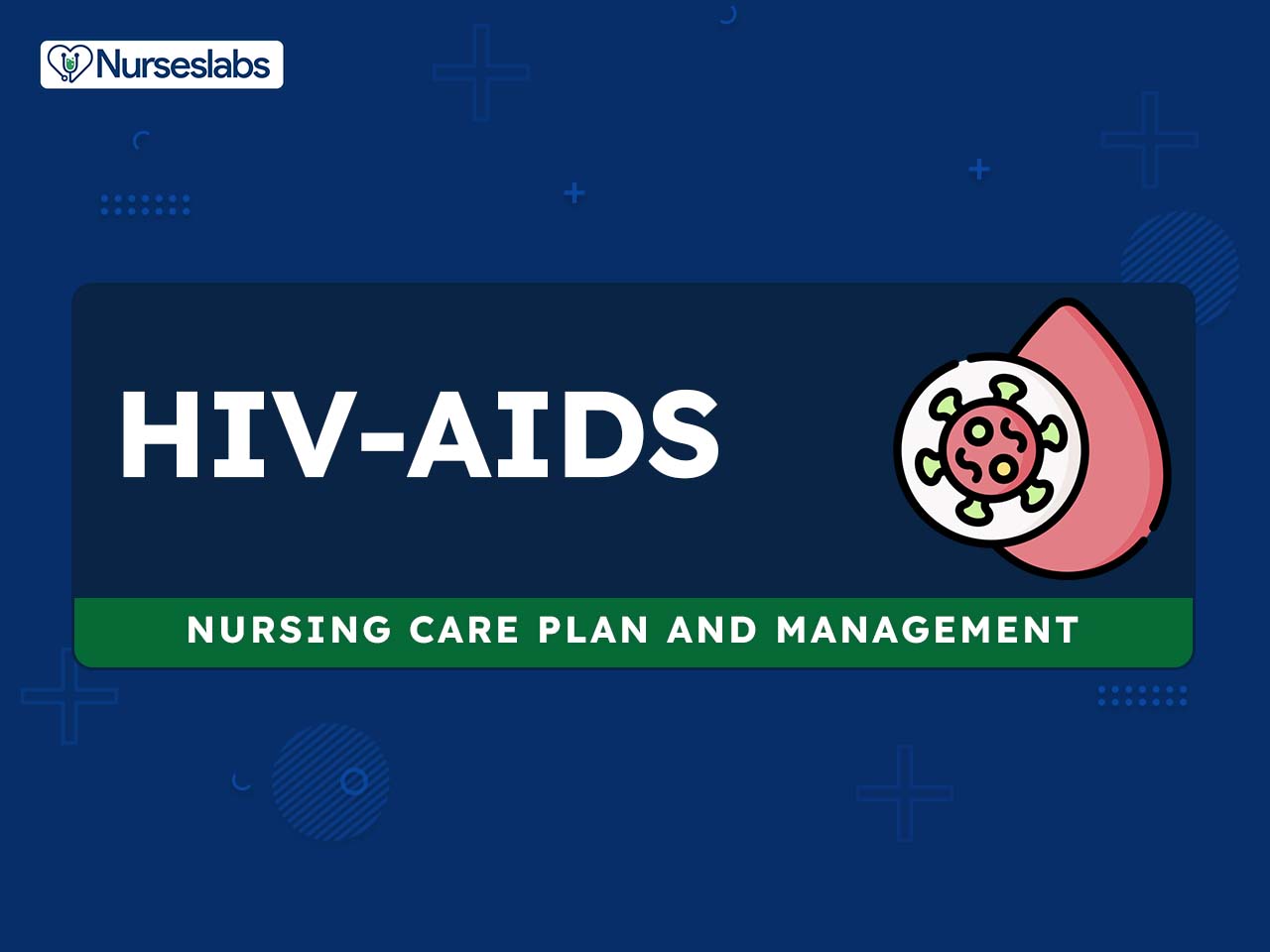
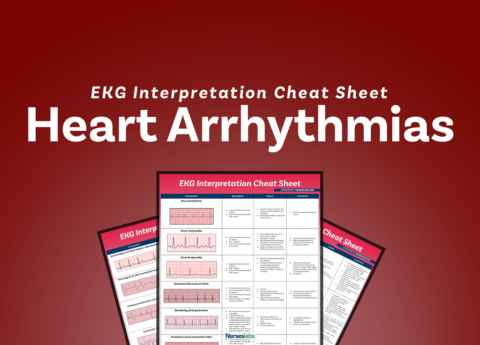
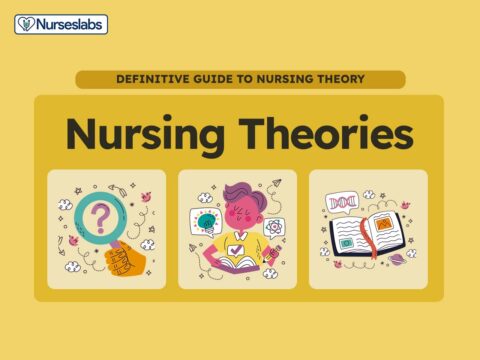
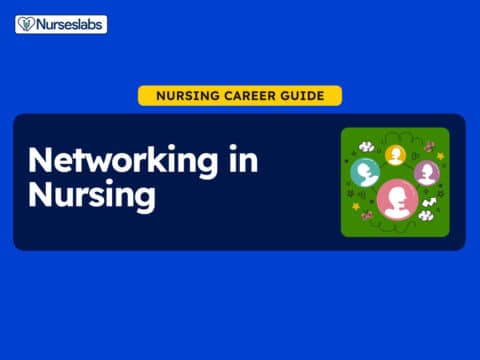






















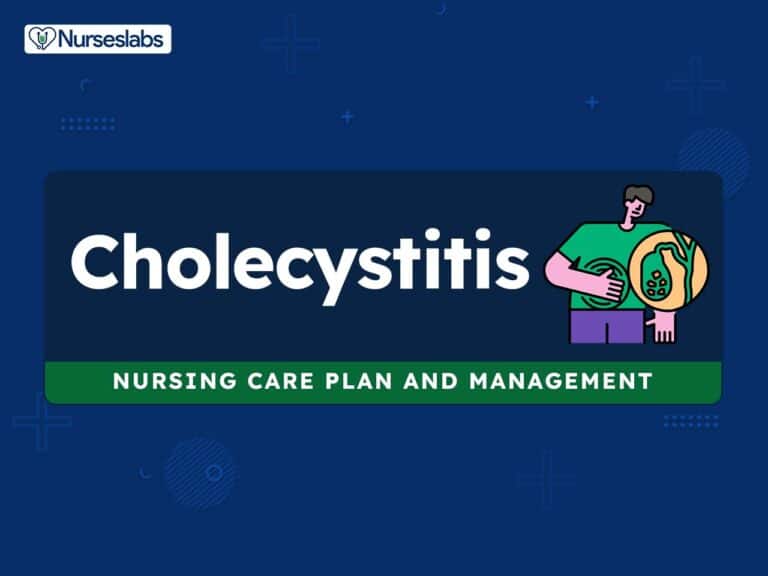
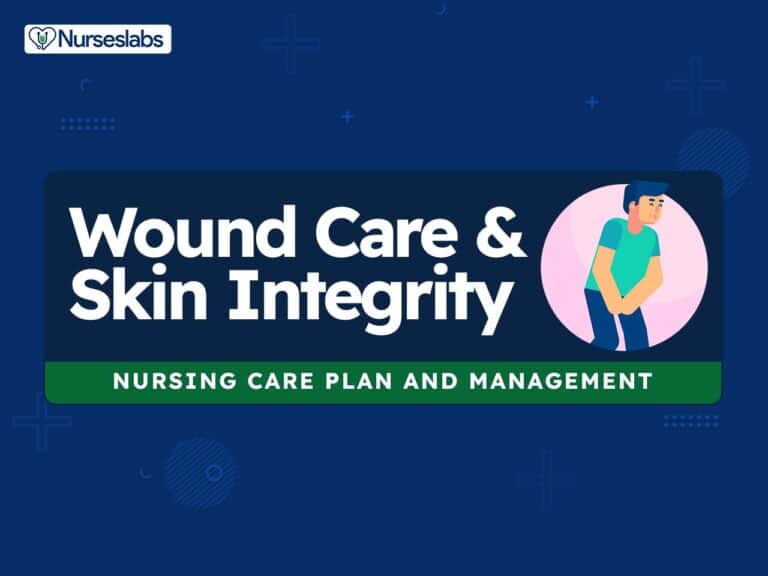
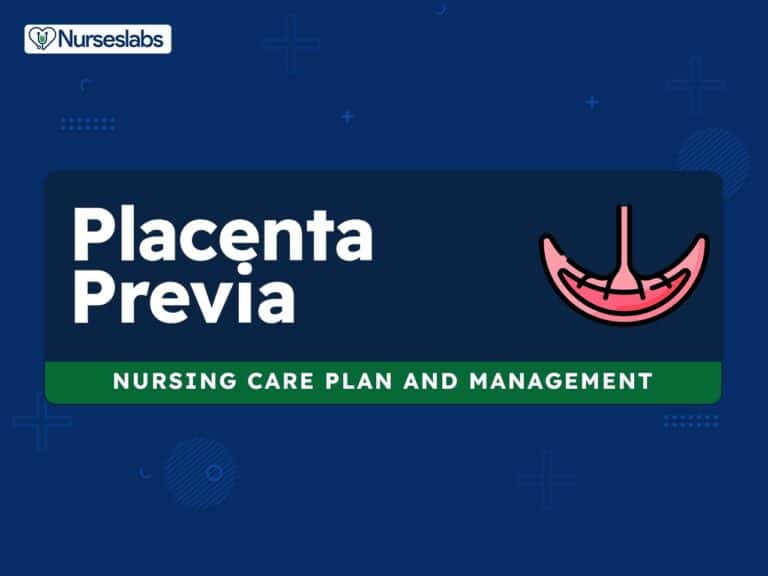
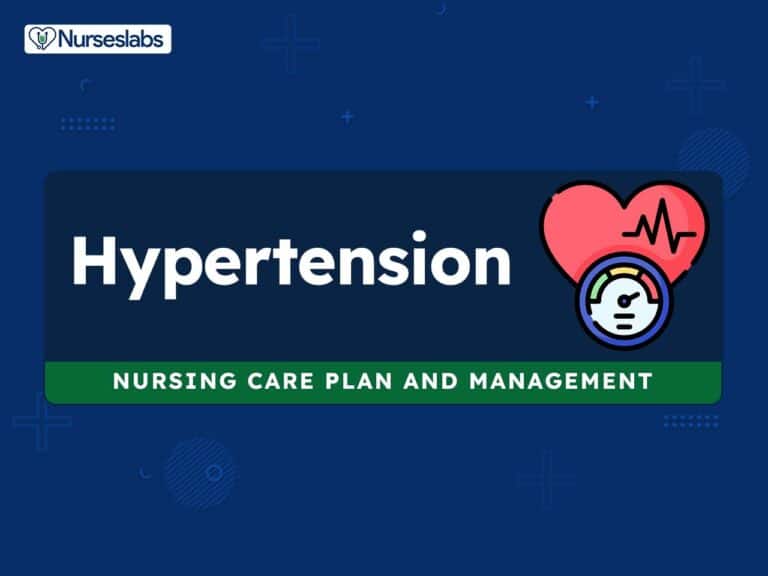
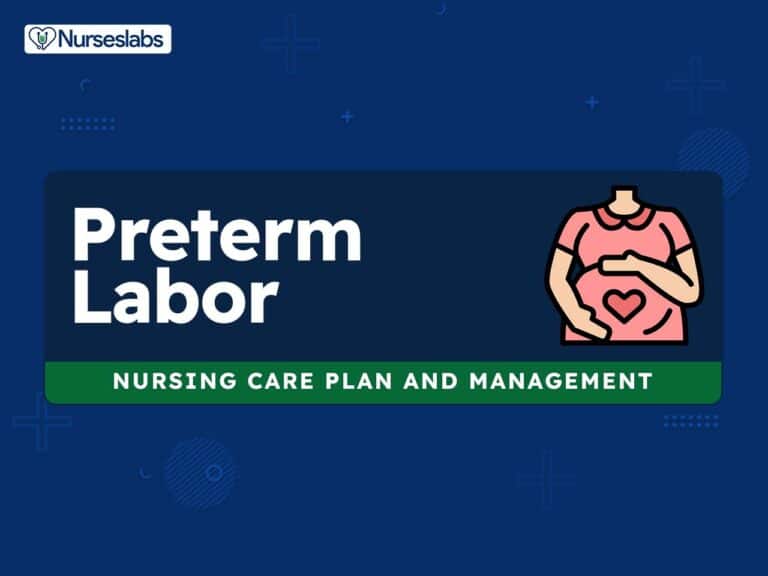


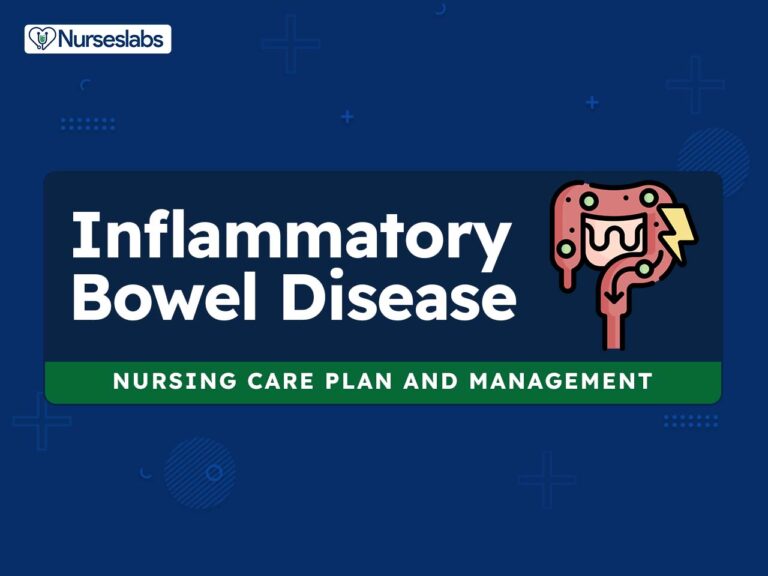


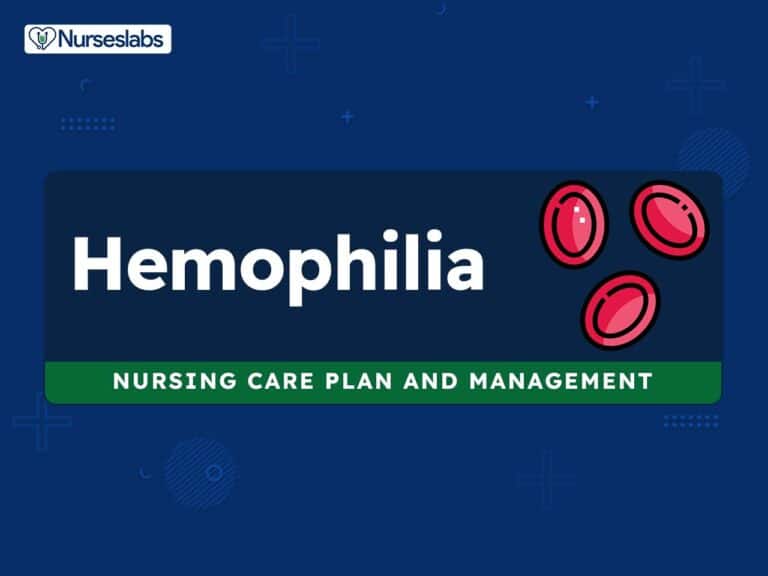
Leave a Comment